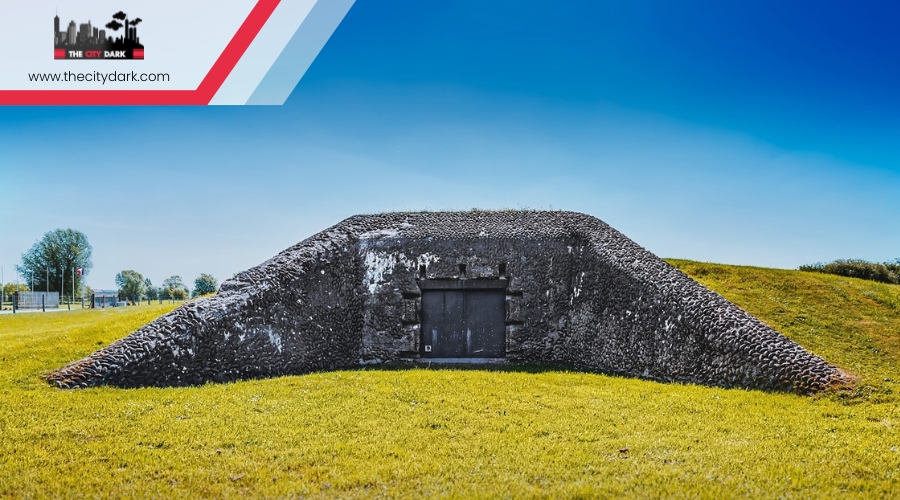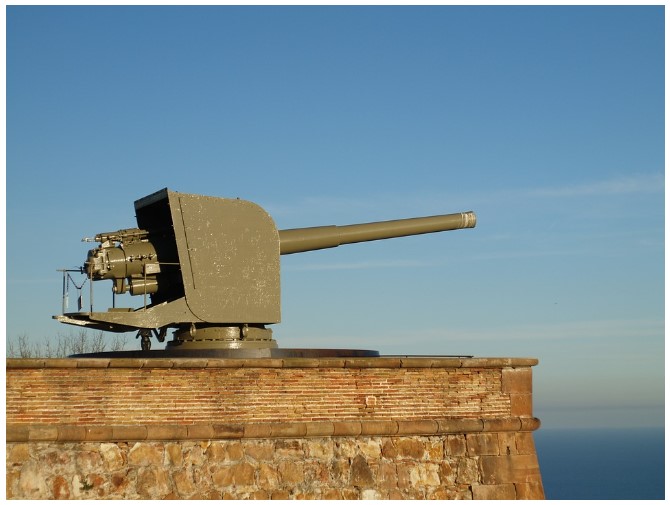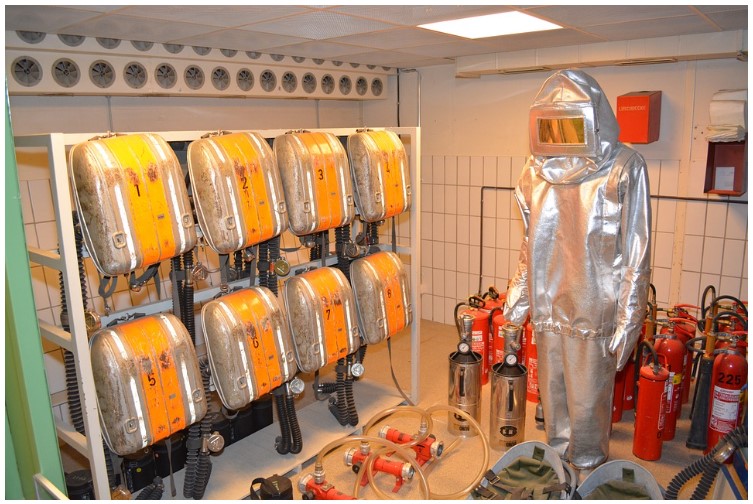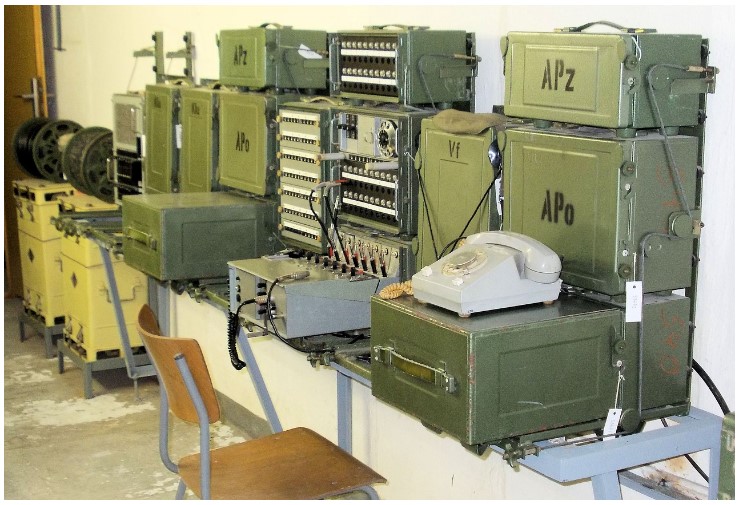Imagine yourself standing at the entrance of a vast underground labyrinth, its purpose and depth a mystery waiting to be uncovered. You’ve likely heard of bunkers, those formidable structures designed to withstand everything from military onslaughts to natural disasters.
Yet, as you stand here, you might not be aware of the intricate web of purposes they serve, from military defense bastions brimming with the echoes of past conflicts to disaster survival shelters offering a beacon of hope amidst chaos. Each type of bunker, be it an underground storage facility, a Cold War-era fallout shelter, or a secret government facility, carries a unique tale of human ingenuity and survival instinct.
Let’s step into the shadows of these subterranean fortresses together, and uncover the myriad ways in which they’ve been our silent protectors, often hidden in plain sight, yet always ready to serve their critical, sometimes mysterious, roles in our world’s history and future.
Key Takeaways
- Military Defense Bunkers are reinforced structures that provide soldiers and equipment protection in combat, featuring observation posts, firing posts, and artillery emplacements.
- Disaster Survival Shelters are designed to offer essential protection and supplies during emergencies, with underground, above-ground, and mobile options available.
- Underground Storage Facilities ensure the long-term security of essential supplies, protecting them from natural disasters and security threats.
- Cold War-era Fallout Shelters were constructed to protect civilians from nuclear fallout, stocked with food, water, and medical supplies, and symbolized a government’s commitment to civil defense.
Military Defense Bunkers
Military defense bunkers serve as crucial fortresses, offering soldiers and their equipment a shield against the onslaught of enemy attacks. These specialized structures are your lifeline in the heart of combat, strategically positioned to provide both cover and concealment from adversaries. Imagine stepping into a bunker, knowing it’s reinforced with concrete, designed to take the brunt of artillery fire and bomb blasts. You’re not just in any shelter but a meticulously engineered safe haven that could mean the difference between life and death.
Within these military defense bunkers, you’d find a variety of facilities including observation posts to keep an eye on the enemy, individual firing posts for direct engagement, and artillery emplacements ready to support troops from a distance. There are also shelters for rest and recuperation, alongside ammunition bunkers that ensure you’re always ready for the fight.
These bunkers aren’t just passive structures; they’re an active, integral part of ensuring the safety and operational readiness of military personnel during conflicts. So, when you think about the backbone of military defense, remember the pivotal role these bunkers play in safeguarding those who protect us.
Disaster Survival Shelters
When you’re facing the wrath of nature, disaster survival shelters offer a lifeline, providing essential protection and supplies. These shelters are meticulously designed to shield you from the harshest conditions, whether it’s a ferocious storm, an earthquake, or any other emergency scenario. Depending on your needs and location, there’s a variety of shelters to choose from, each with its unique advantages.
Underground bunkers, for example, are your go-to for long-term safety. Engineered to endure extreme weather, they’re buried deep enough to avoid the chaos above. If you’re looking for something that can be quickly set up, above-ground shelters are your best bet. They’re versatile and can be assembled rapidly when time is of the essence.
For those who value mobility, mobile survival shelters are a perfect choice. These can be moved to various locations, providing flexibility in unpredictable situations. Lastly, community shelters stand as beacons of collective security, designed to shelter larger groups. They ensure that no one has to face disasters alone, offering a shared safe space.
No matter the type, disaster survival shelters are crucial in ensuring you and your loved ones remain safe when disaster strikes.
Underground Storage Facilities
While disaster survival shelters offer immediate safety during emergencies, underground storage facilities ensure the long-term security of essential supplies like food and water. These spaces are designed for the secure, climate-controlled storage of items including fuel and other critical supplies. They’re not just about keeping things cool or at a steady temperature; they’re about guaranteeing that, in times of crisis, what you need is safe, sound, and within reach.
Underground storage facilities play a crucial role in the preservation of perishable goods, emergency supplies, and strategic reserves. They shield these vital resources from the unpredictable elements above ground—be it natural disasters, extreme weather, or potential security threats. This level of protection is key, especially when the surface world is in turmoil.
Moreover, these facilities are built to withstand significant external pressures, ensuring that the integrity of stored items remains uncompromised over long periods. In essence, they’re the unsung heroes in maintaining critical supplies during times of need, making sure everything from water to fuel isn’t just available but in optimal condition for use.
In a world where preparation is key, underground storage facilities are an essential part of the resilience toolkit.
Cold War-era Fallout Shelters
Did you know that during the Cold War, fallout shelters were essential for protecting civilians from the threat of nuclear fallout? These cold war-era fallout shelters, often nestled underground or tucked away in basements, were the epitome of safety against the invisible menace of radiation. Constructed primarily from reinforced concrete, these robust structures were built to withstand the devastating impacts of a nuclear explosion and the subsequent radioactive fallout.
Beyond their sturdy walls, these shelters were mini-sanctuaries, stocked with enough food, water, and medical supplies to sustain occupants for an extended period. The goal was clear: to provide a safe haven in the dire event of a nuclear attack. You’d find these shelters equipped with everything needed to survive in isolation until it was safe to emerge.
Fallout shelters weren’t just about survival; they were a critical component of the Cold War’s civil defense strategy. They symbolized a government’s commitment to protect its citizens from the horrors of nuclear conflict. As you delve into the history of bunkers and their uses, understanding the pivotal role of cold war-era fallout shelters offers a glimpse into a time when the world teetered on the brink of nuclear war.
Secret Government Facilities
Moving beyond the publicly known fallout shelters of the Cold War era, let’s explore the secretive realm of government facilities, shrouded in mystery and critical to national security. These covert locations, operated by government agencies, serve purposes that remain classified to the general public. They’re the backbone of intelligence gathering, research and development of cutting-edge technologies, and strategic planning.
Secret government facilities are designed to endure the unthinkable: natural disasters, nuclear attacks, and other threats that could jeopardize operations. Their construction and location are meticulously chosen to ensure the utmost security and continuity. You won’t stumble upon these facilities during a casual hike; they’re often nestled in remote areas or their locations are kept under wraps.
Within the walls of these enigmatic fortresses lie special military units, storage for sensitive materials, and command centers prepared to manage emergency situations. Access is highly restricted, underpinning the level of secrecy and importance these facilities carry. In the world of 7 secret government facilities, each plays a pivotal role in safeguarding a nation’s secrets and ensuring its security strategy remains unbreachable.
Conclusion
You’ve now learned about the various bunkers serving distinct purposes, from military defense to disaster survival. Whether it’s underground storage or Cold War-era fallout shelters, each plays a crucial role in protection and secrecy.
Secret government facilities add another layer of intrigue. Understanding these bunkers’ uses helps you appreciate their importance in strategy, safety, and historical preservation. So, next time you come across a bunker, you’ll know it’s more than just a hole in the ground—it’s a testament to resilience and preparedness.




